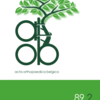Management of tibial plateau fractures: a fresh review
Tibial plateau, tibioplasty, three column, locking plate
Published online: Aug 12 2023
Abstract
Tibial plateau fractures are complex injuries which carry significant morbidity and economic burden. They can present complex geometry depending upon the direction of the force and position of the limb and are often associated with significant soft-tissue injury. While the goals of adequate reduction, stable fixation, and early mobilization remain unchanged, the management of these injuries can be challenging even to experienced orthopaedic surgeons. Lacking consensus, this review aims to provide a summary of current state of orthopaedic practice in the face of tibial plateau fractures. A PubMed search for relevant recent articles as well as a reading of classical articles on tibial plateau fractures was carried out. The focus remained on articles concerned with management modalities and recent advances. A review of some classification systems was also done and included. A great majority of these fractures need operative fixation while respecting the soft tissues. Numerous methods have been reported in the literature including but not limited to plates, screws, external fixators, arthroscopy assisted methods, balloon-cement tibioplasty, or a combination thereof. There is a shortage of randomized controlled trials comparing various operative methods. This article provides a review of various techniques and latest advances made in the management of tibial plateau fractures. The key to achieving optimal functional outcome is using a tailored approach to the individual patient accounting for factors related to the injury pattern, type of host, surgical skills and experience, and local availability of implant devices while taking care of soft tissue. While there is no gold standard, a staged procedure is recommended with early spanning and definitive fixation at later stage by any appropriate methods while respecting the soft tissue, achieving anatomical reduction and adequate fixation and, early rehabilitation.
